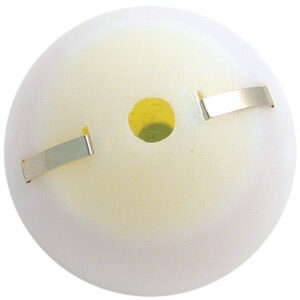 by: Sarah Brandt
by: Sarah Brandt
The uniquely entertaining energy ball is a fun way to demonstrate open and closed circuits, as well for prompting discussions on conductivity. The following activities are perfect to use in elementary and middle school grades first exploring electricity and circuits.
When both sensors on the ball are touched and a complete circuit is formed, the ball flashes a red light and buzzes.
What makes the energy ball work?
Inside the energy ball is a simple circuit that is completely self-contained. By touching both sensors, the circuit is completed by electrons flowing through your body or another conductive material such as a paper clip. Materials that activate the energy ball
are good conductors, meaning they pass electrons easily. Materials that do not activate the energy ball are poor conductors (or insulators), meaning they do not pass electrons easily. Read the rest of this entry »




 Posted by Tami O'Connor
Posted by Tami O'Connor  by: Tami O’Connor
by: Tami O’Connor